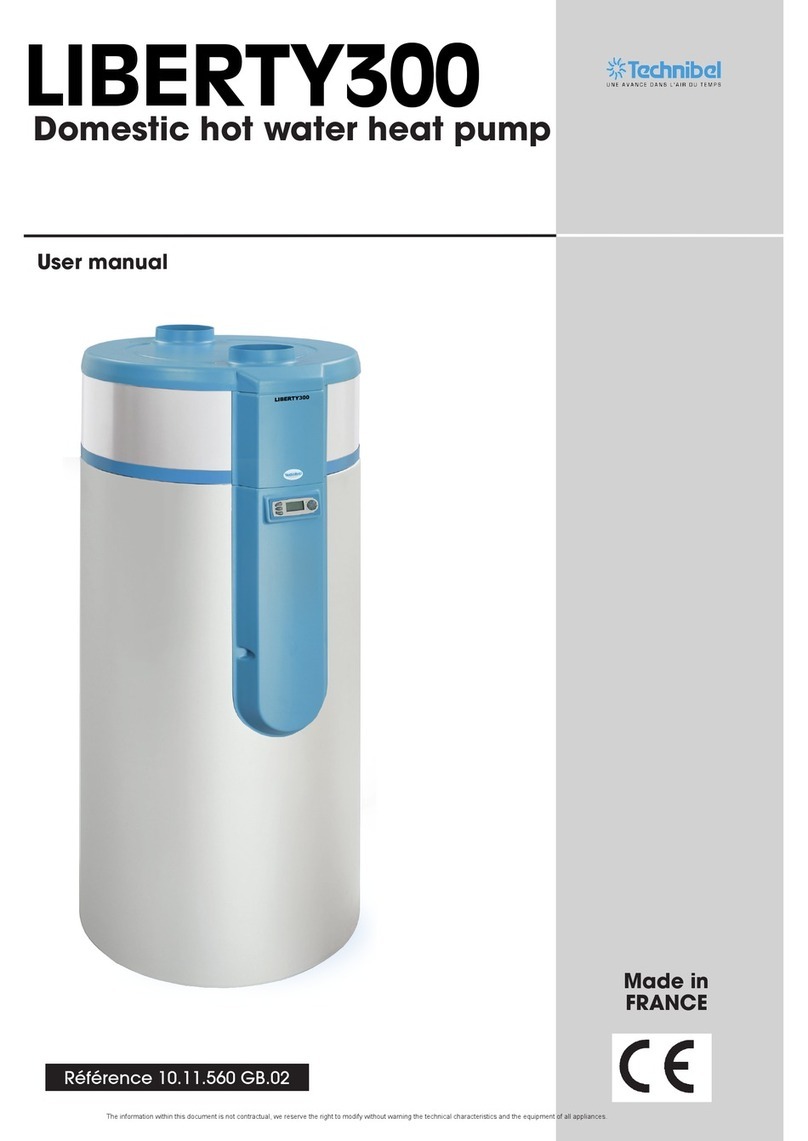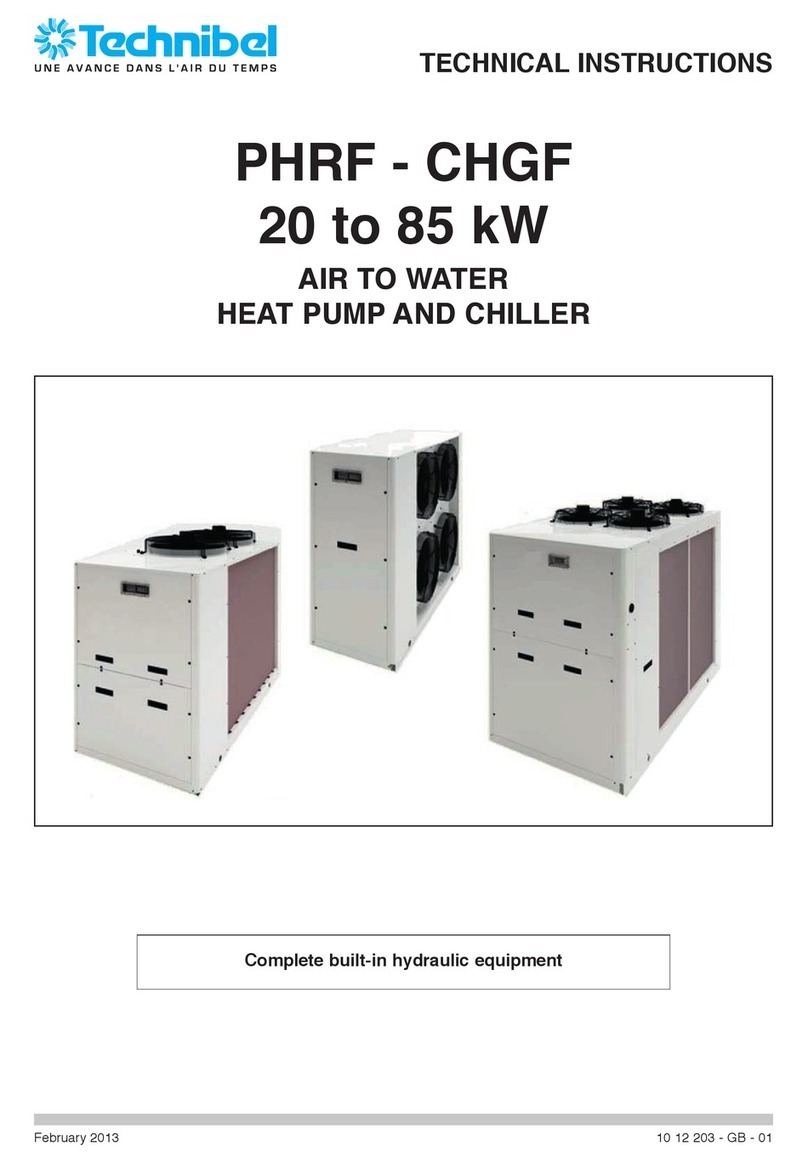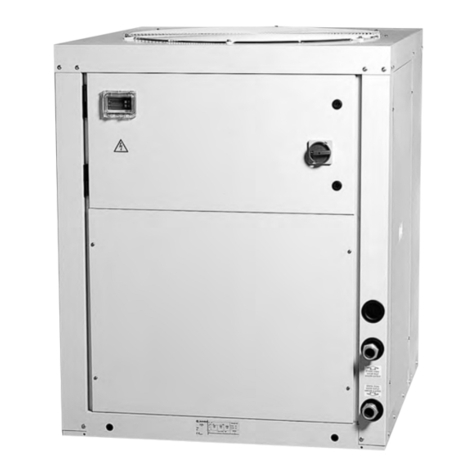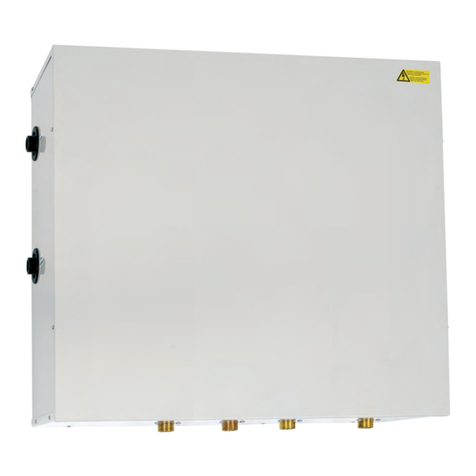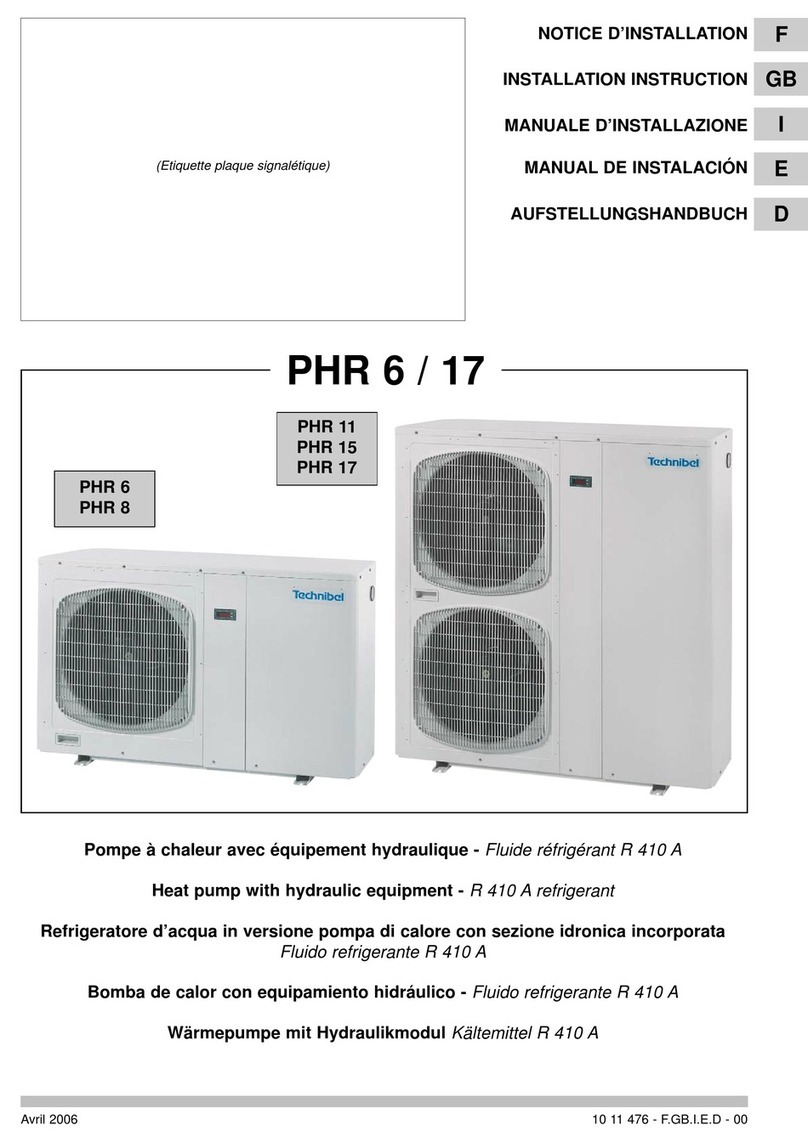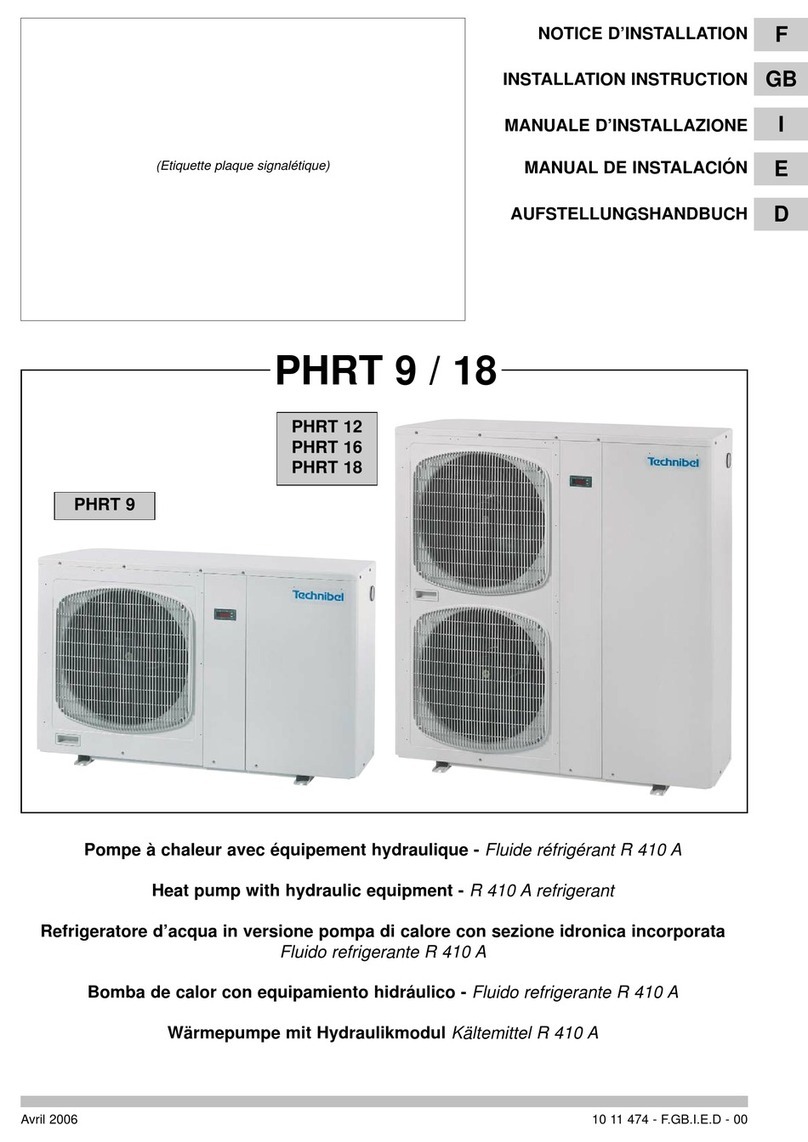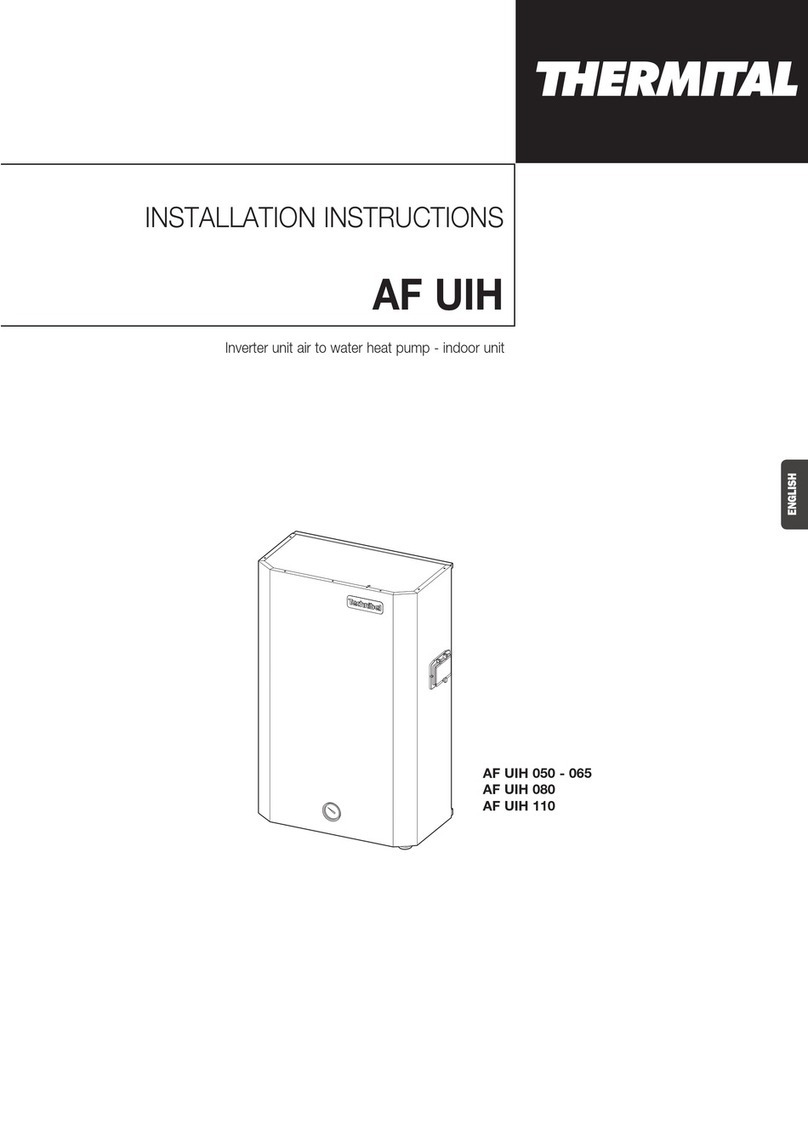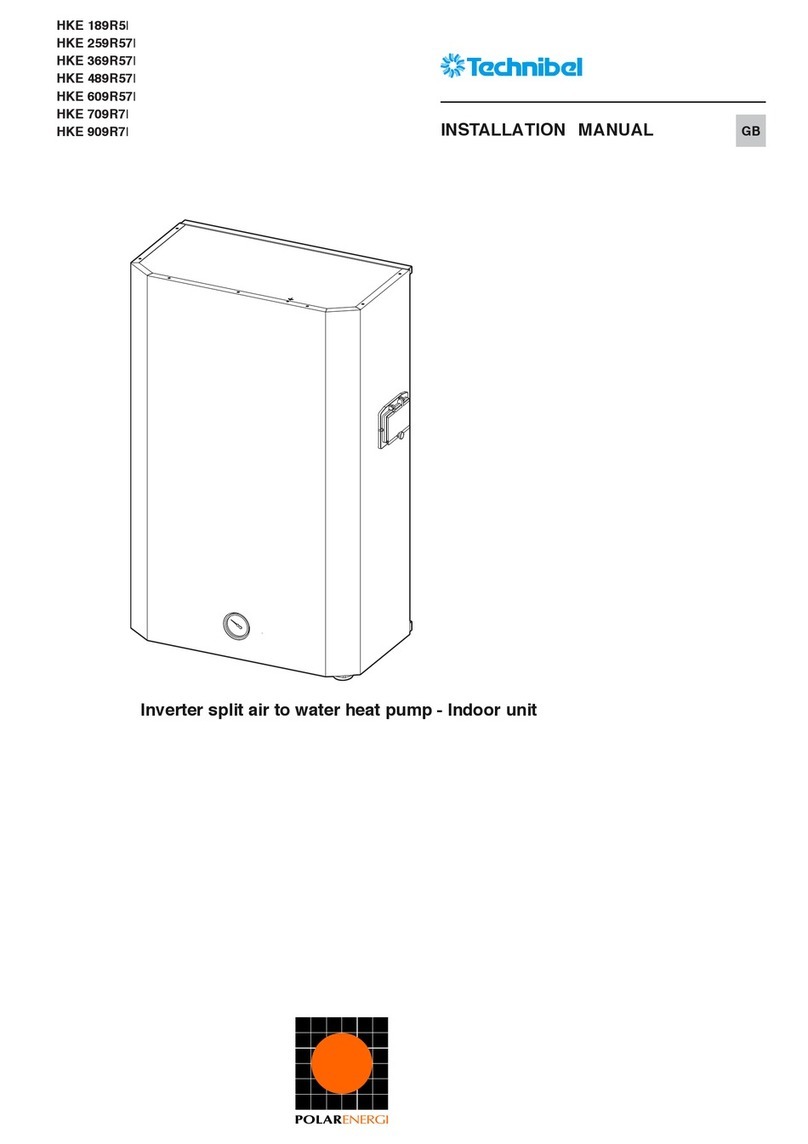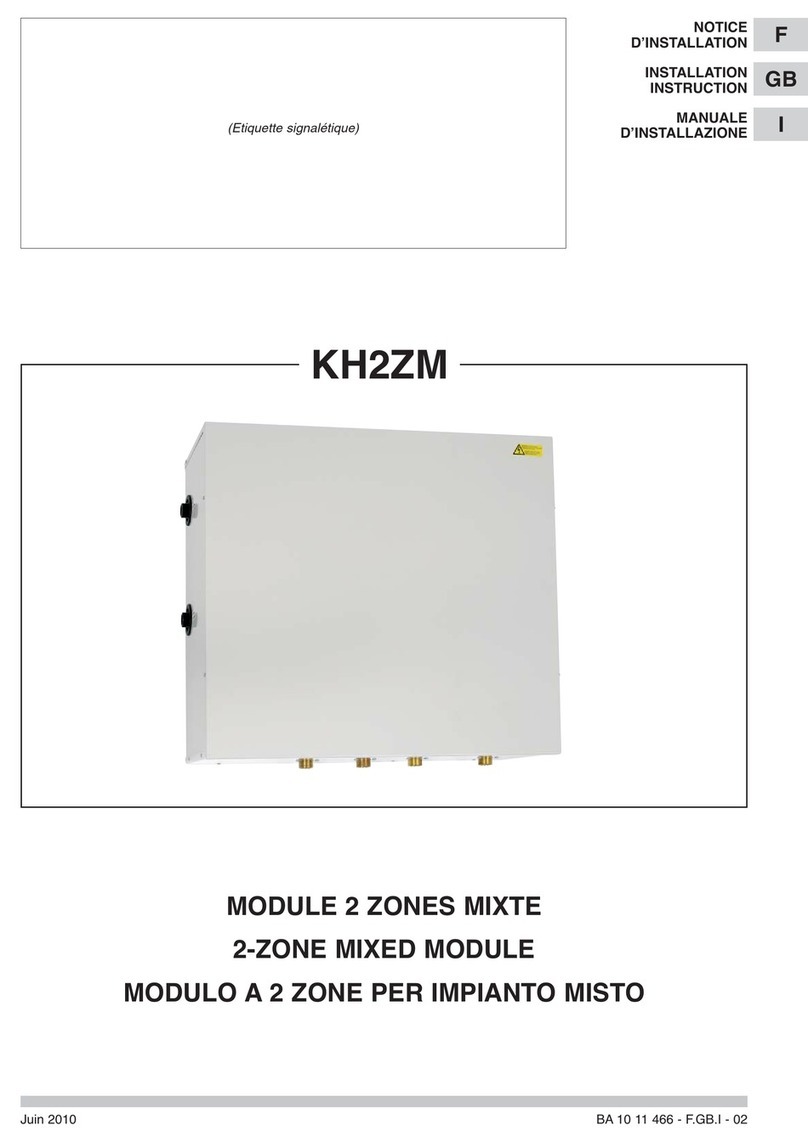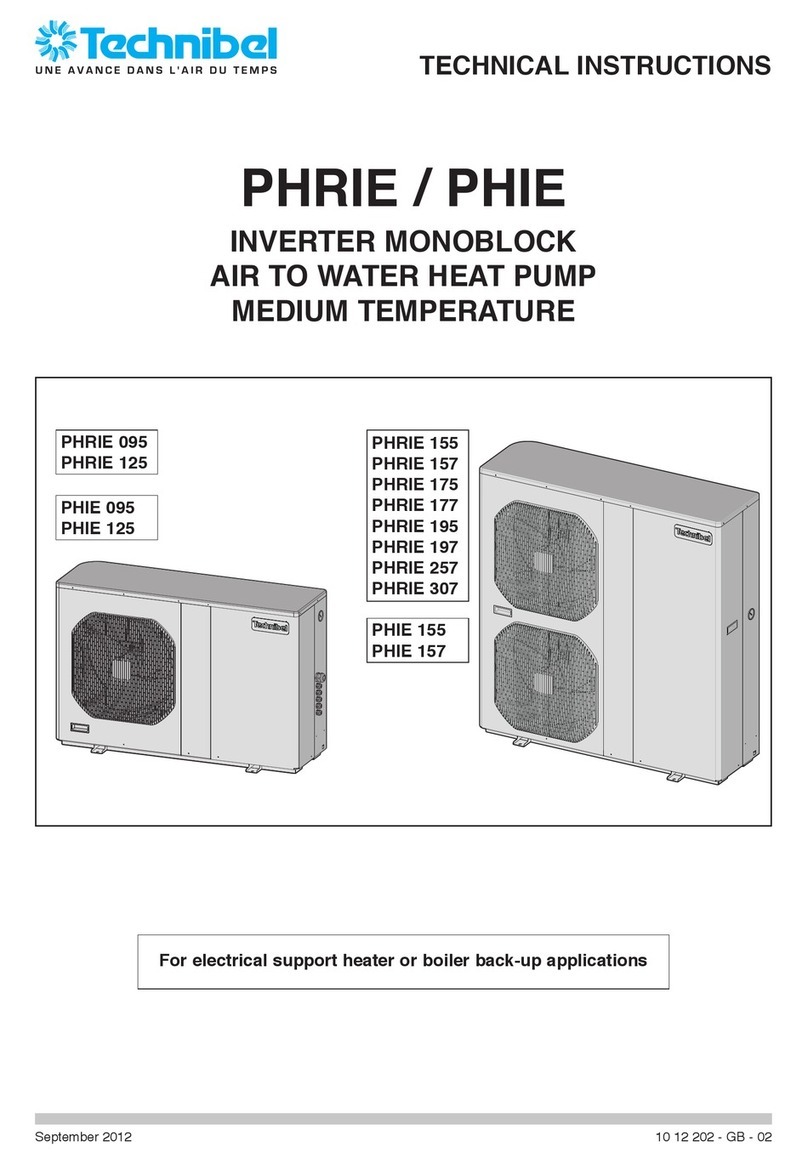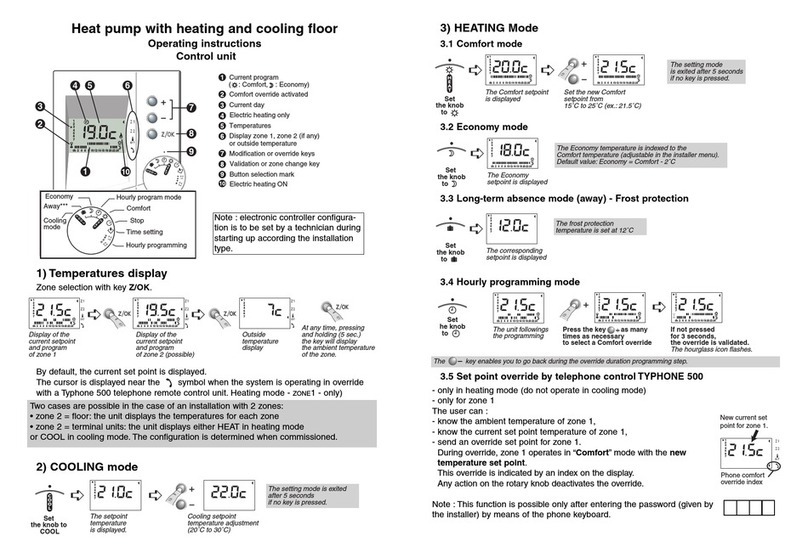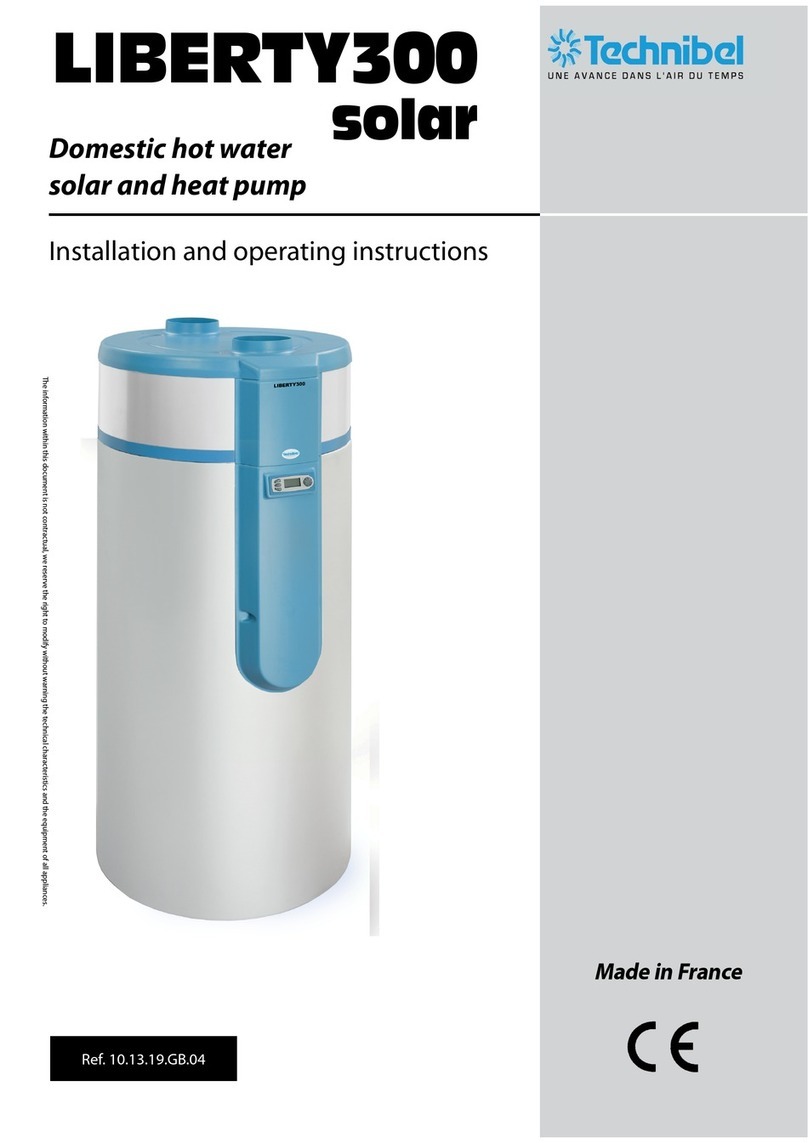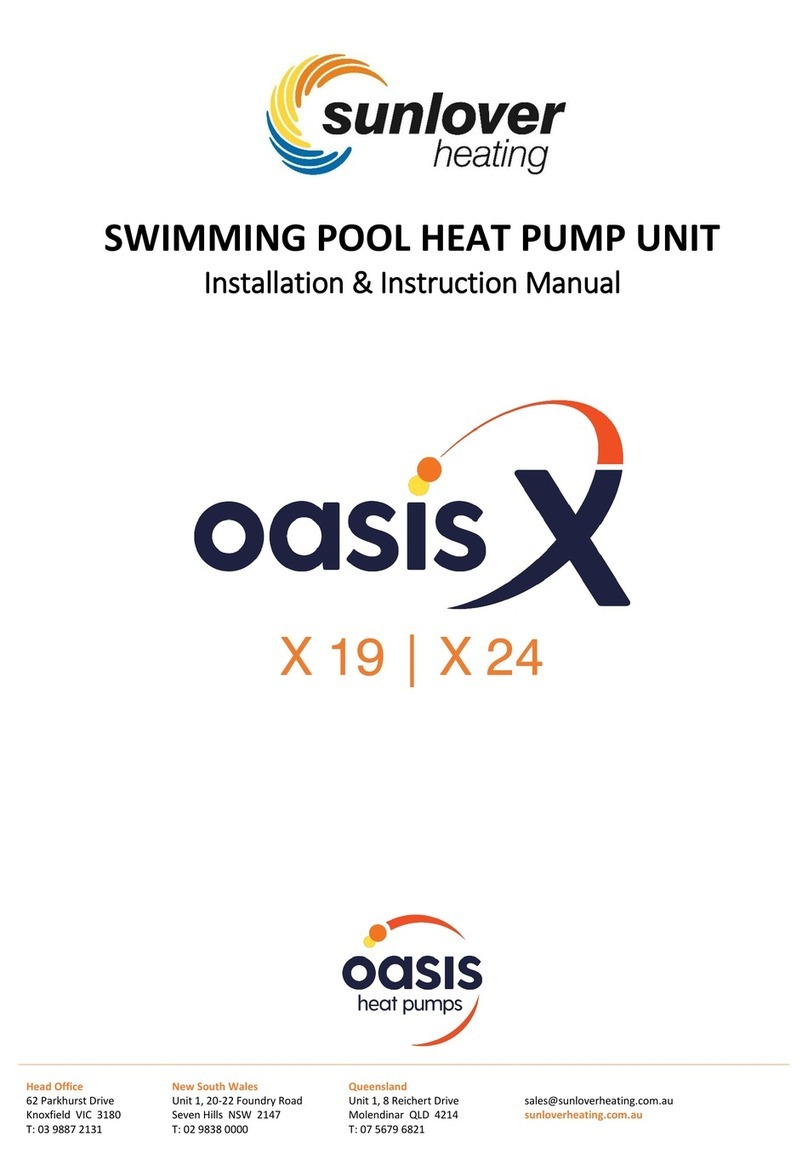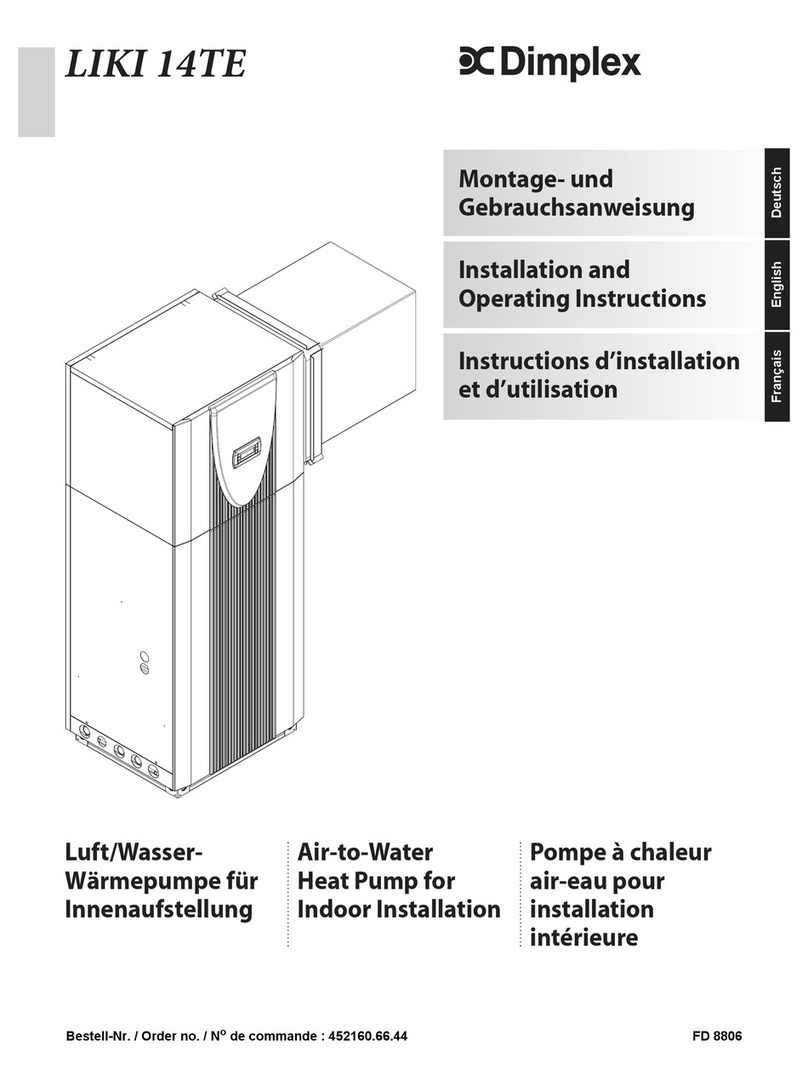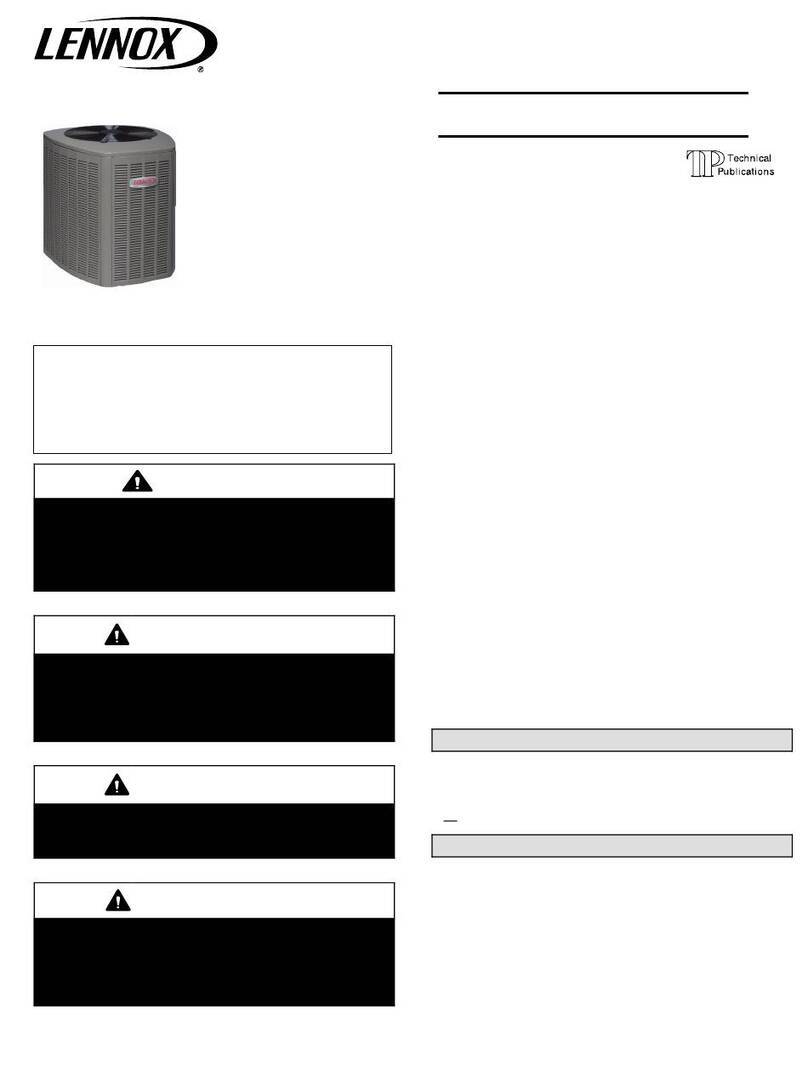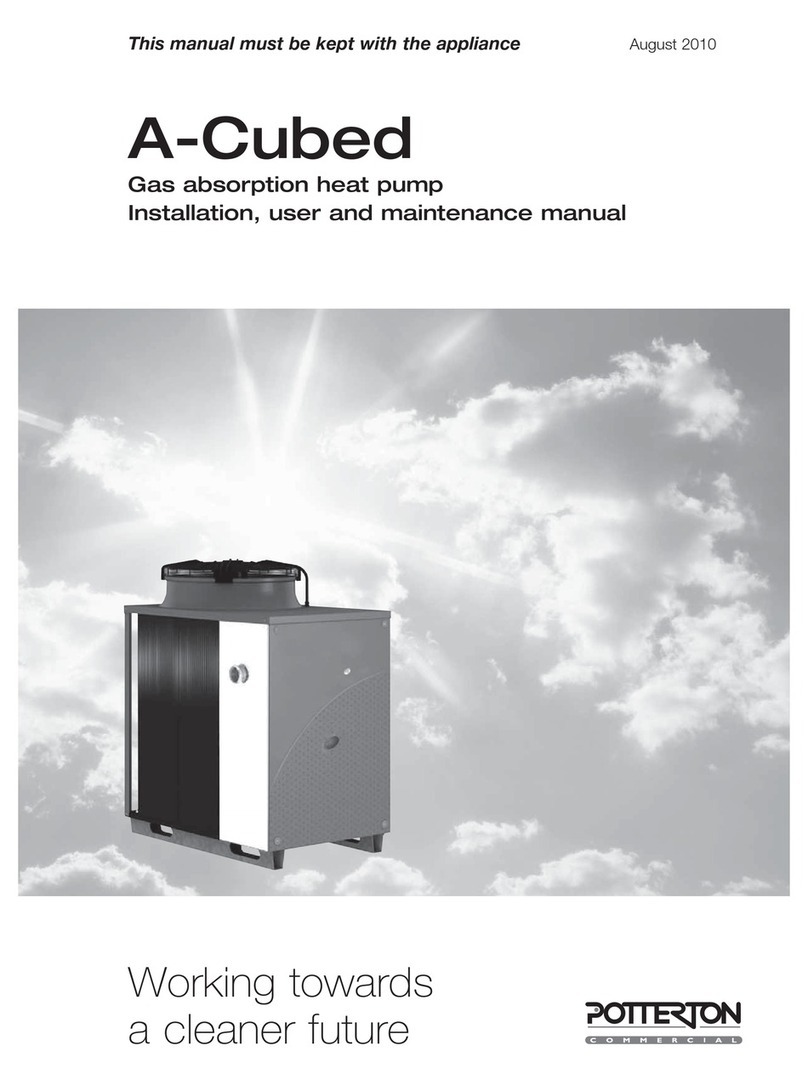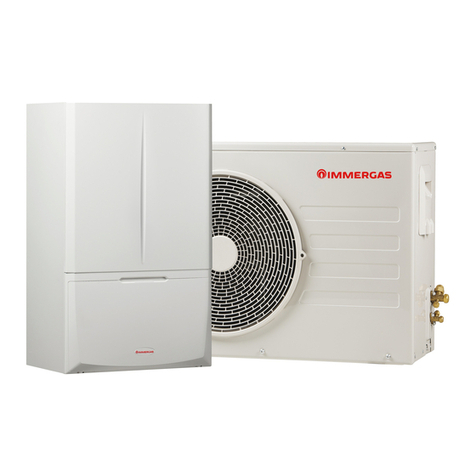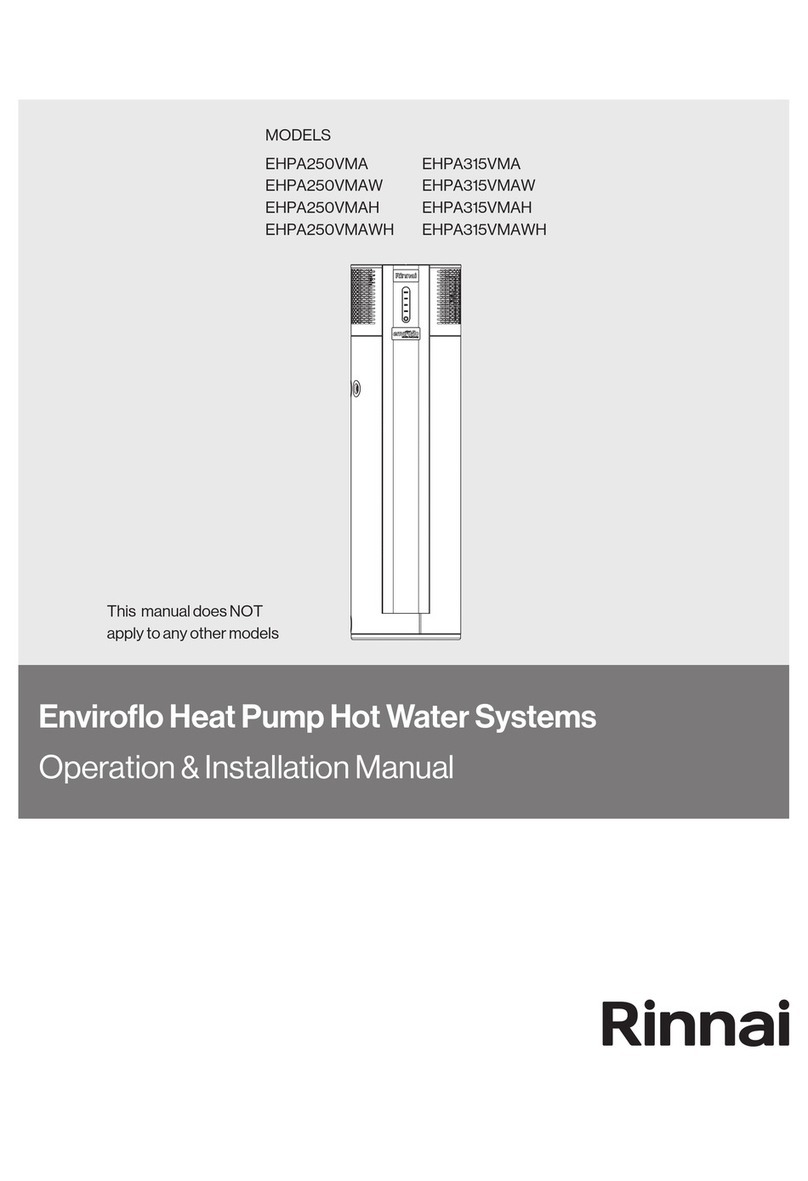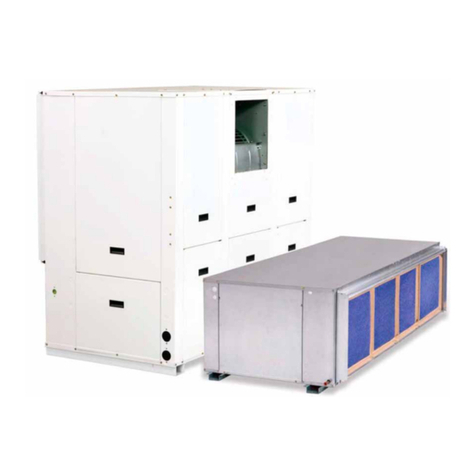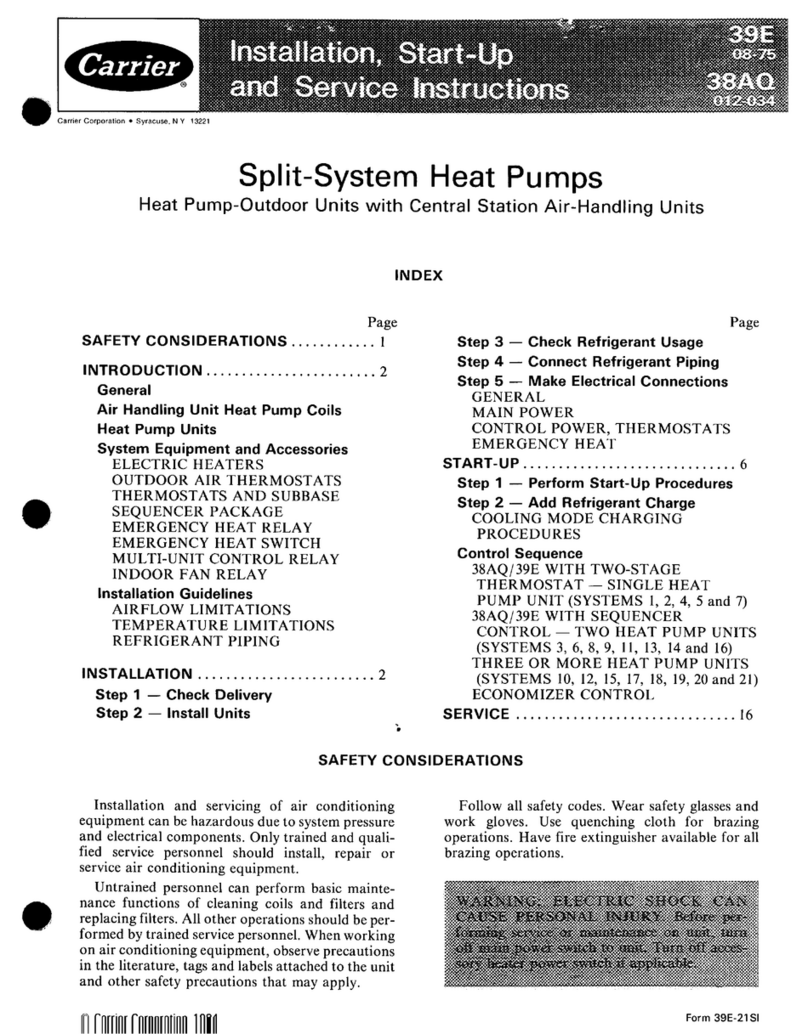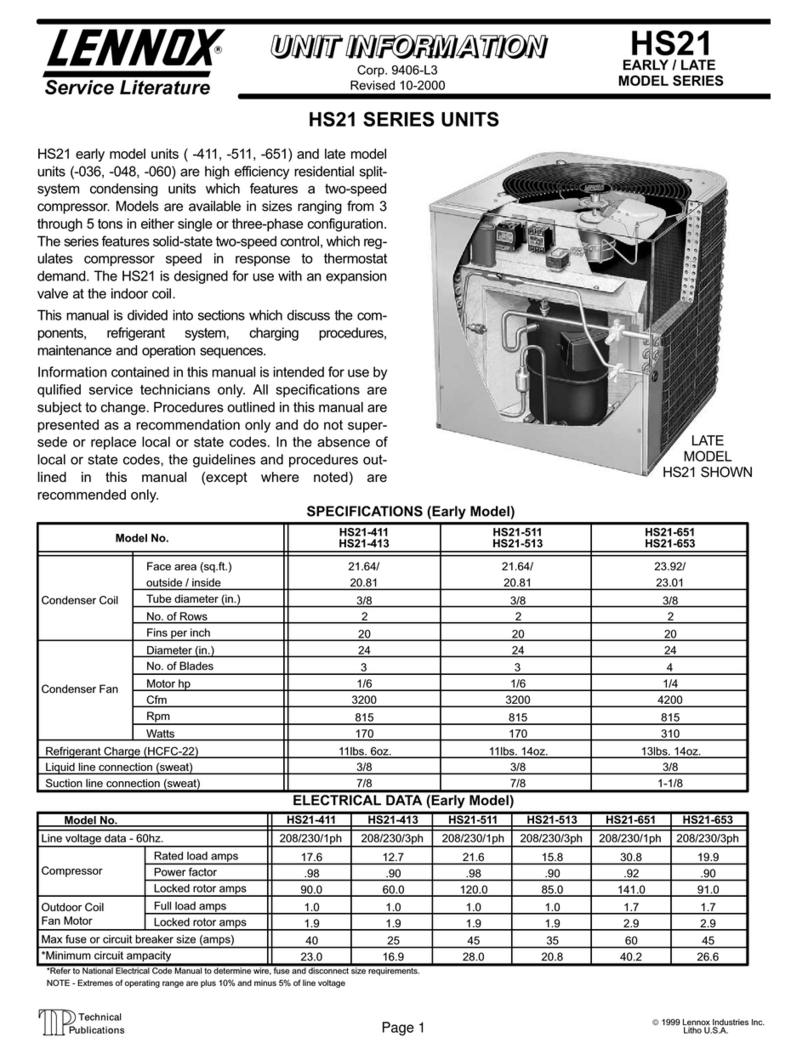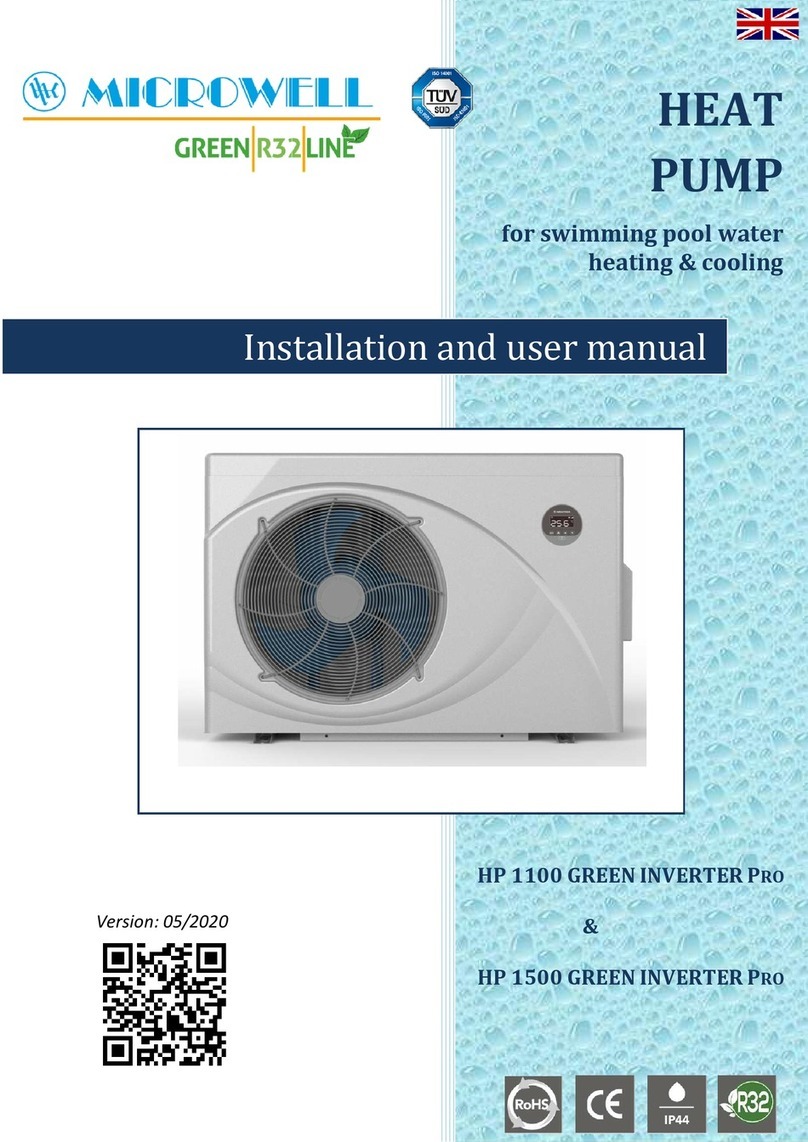19
8 - MAINTENANCE
8.1 - PERIODIC CHECKS
•Carry out the following operations at least once a year
(the frequency depends on the installation and operating conditions):
IMPORTANT
Before carrying out any work on the machine, make sure that it is switched off and that access to it is prevented.
Any work must be carried out by personnel qualified and authorised to work on this type of machine.
GENERAL MAINTENANCE:
All equipment must be properly maintained in order to provide optimum performance over time. Faulty maintenance can result in
thecancellation ofthe productguaranty.Depending onthe products,maintenance operationsconsistin thecleaning offilters (air,
water), internal and external exchangers, casings, and the cleaning and protection of condensate tanks. Treating odours and the
disinfection of room surfaces and volumes also contributes to the cleanliness of the air breathed by users.
TECHNIBELproposesawiderangeofperfectlyadaptedprofessionalcleaning,maintenanceandrepairproductsforcompleteand
efficient maintenance. For an optimum result, TECHNIBEL air-conditioners must be maintained with TECHNIBEL maintenance
products.
-Cleaning the air exchanger.
-Checking the wear parts.
-Checking the operating set points and temperatures.
-Check the refrigerant circuit in accordance with the
regulations in force.
-Checking the safety devices.
-De-dusting the electrical equipment cabinet.
-Checking that the electrical connections are secure.
-Checking the earth connection.
-Check for leaks.
-Check the operation and parameters as per the start-up
data sheet.
-Check the hydraulic circuit in accordance with standard
trade practices (output, pressure, purge the circuit and
particularlythepump–seeparagraph6.3,filtercleaning).
-For models equipped with a hydraulic module, check that
the safety valve operates correctly.
8.2 - REFRIGERANT CIRCUIT RECOMMENDATIONS
•Anew filter dryer must be installed after all servicing operations performed on the refrigerant circuit.
8.2.1 - INSTALLATION AND MAINTENANCE
•Prior to all servicing or other actions on the equipment, installation, commissioning, operation, or maintenance, the
personnelincharge oftheseoperationsshallbecomefamiliarwith theinstructionsandrecommendations providedinthe
installation manual of the unit as well as the elements of the project's technical file.
•The unit must be installed, started, maintained and repaired by qualified servicing personnel in compliance with the
requirements of all directives, laws and regulations and in accordance with standard trade practices.
•During installation, troubleshooting and maintenance operations, the use of pipes as a step: under the stress, the pipe
may rupture and the refrigerant may cause serious burns.
•During unit maintenance operations, the composition and the condition of the coolant will be checked, as well as the
absence of all trace of refrigerant.
•During the unit's annual seal test, in accordance with the law, check that the high and low-pressure pressure controllers
are correctly connected on the refrigerating circuit and that they disconnect the electrical circuit in case of tripping.
•During maintenance operations, make sure that there is no trace of corrosion or oil stains around the refrigerating
components.
•Priortoallmaintenanceandservicingontherefrigeratingcircuit,onemustfirst shutdownthe unitthenwait afewminutes
before installing temperature or pressure sensors. Certain equipment, such as the compressor and piping, may reach
temperatures above 100°C and high pressures may lead to serious burns.
8.2.2 - TROUBLESHOOTING
•Allmaintenanceandservicingoperationsontherefrigeratingcircuitmustbeconductedinaccordancewithstandardtrade
practices and safety rules: recovery of the refrigerant, inert shielded (nitrogen) brazing, etc.
•All brazing operations must be conducted by qualified welders.
•For equipment charged with R407C, refer to the specific instructions in the installation manual.
•Thisunit is equippedwith pressurized equipment,for examplepiping.Use onlygenuine parts listedin the spareparts list
for replacing defective refrigeration components.
•Pipes may only be replaced by copper tubing in compliance with standard NF EN 12735-1.
•Leak detection, in the case of pressure testing:
-Never use oxygen or dry air, as the risk of fire or explosion is present
-Use dehydrated nitrogen or a nitrogen and refrigerant mix indicated on the manufacturer's plate
-The test pressure, low and high pressure, must not exceed 20 bar and 15 bar in the case where the unit is equipped
with the pressure gauge option.
•All part replacement with other than genuine parts, all modifications of the refrigerating circuit, all replacement of
refrigerant by a fluid other than that indicated on the manufacturer's plate, all use of the unit outside the application limits
defined in the documentation, shall result in the cancellation of PED CE marking compliance which shall fall under the
liability of the individual who carried out these modifications.























